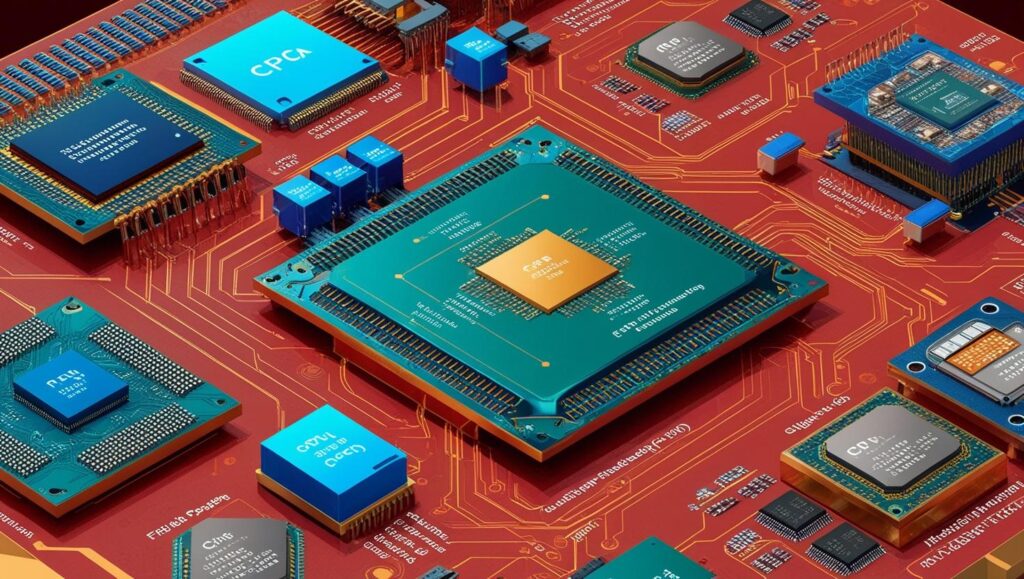The global semiconductor landscape is undergoing a paradigm shift — and at the heart of this transformation is the chiplet Market . Once a niche concept confined to advanced research labs, chiplets are now moving to the center stage of processor design, signaling a major architectural and economic shift in how integrated circuits are designed, manufactured, and scaled. As the limitations of traditional monolithic chips become more pronounced, the emerging chiplet market is gaining momentum, driving innovation across consumer electronics, AI, cloud computing, automotive, and defense sectors.
What Are Chiplets?
Chiplets are smaller, functional semiconductor dies that can be combined to create a larger, more complex system-on-chip (SoC) through high-speed interconnects. Instead of building a single large monolithic die — which is expensive, yield-challenging, and time-consuming — designers can integrate multiple chiplets, each specialized for different tasks such as compute, memory, I/O, or security.
This modular approach reduces cost, improves yield, shortens time-to-market, and allows for heterogeneous integration, meaning chiplets fabricated on different process nodes or from different foundries can coexist within a single package.
The Drivers Behind Chiplet Adoption
The rise of chiplets is being fueled by multiple industry pressures. First, Moore’s Law — the long-standing observation that transistor density doubles approximately every two years — is slowing. Advanced nodes like 3nm and 2nm are becoming increasingly expensive and technically challenging. Chiplets offer a way to continue scaling performance by disaggregating complex SoCs into smaller, reusable, and process-optimized components.
Second, the demand for domain-specific architectures has exploded. From AI accelerators and edge processors to networking ASICs and automotive SoCs, there’s no one-size-fits-all silicon solution. Chiplets make it possible to mix and match computing, storage, and connectivity components for specific workloads — increasing performance while optimizing power and cost.
Download PDF Brochure @ https://www.marketsandmarkets.com/pdfdownloadNew.asp?id=131809383

Impact on Semiconductor Supply Chains
The chiplet approach is not just a design philosophy — it’s reshaping the entire semiconductor value chain. Traditional chip manufacturing involves tight integration between design, foundry, and packaging. With chiplets, the model becomes more modular and collaborative.
Foundries, OSATs (Outsourced Semiconductor Assembly and Test companies), and EDA (Electronic Design Automation) vendors must now support advanced 2.5D and 3D packaging technologies, like FOWLP (Fan-Out Wafer-Level Packaging), CoWoS (Chip-on-Wafer-on-Substrate), and EMIB (Embedded Multi-die Interconnect Bridge). Meanwhile, chip design teams require new tools and standards for chiplet co-design, power distribution, thermal modeling, and signal integrity.
Open Standards Accelerate Ecosystem Growth
To truly unlock the potential of chiplets, interoperability is key. Industry leaders such as Intel, AMD, TSMC, and Arm have been promoting open interfaces and standards. The Universal Chiplet Interconnect Express (UCIe) standard, introduced in 2022, is a major milestone, offering a unified interconnect protocol that allows chiplets from different vendors to communicate efficiently within a package.
Such standards lower barriers to entry, encourage third-party innovation, and create a more vibrant and diverse chiplet ecosystem — much like how USB and PCIe transformed the peripheral and component markets.
Chiplet Market Outlook and Projections
The chiplet market is projected to grow from USD 6.5 billion in 2023 and is estimated to reach USD 148.0 billion by 2028; it is expected to grow at a Compound Annual Growth Rate (CAGR) of 86.7% from 2023 to 2028. This growth is driven by increasing adoption across data centers, AI/ML accelerators, automotive ECUs, and 5G base stations.
Major players are already investing heavily. AMD’s use of chiplets in its Ryzen and EPYC processors has set a commercial precedent. Intel’s forthcoming Meteor Lake and Granite Rapids platforms are fully chiplet-based. Meanwhile, TSMC is expanding its 3DFabric offerings to support high-volume chiplet production and packaging services.
Challenges and Bottlenecks
Despite the momentum, challenges remain. Designing with chiplets requires deep expertise in thermal management, power delivery, and signal integrity — especially as interconnect speeds reach tens of gigabits per second. Validation, testing, and debugging across multiple dies in a single package add complexity.
Furthermore, the lack of widespread chiplet libraries, trusted vendors, and turnkey design flows creates friction, particularly for smaller companies without in-house packaging or architecture capabilities. Security is also a concern — integrating third-party chiplets raises questions about IP integrity and supply chain trust.
A New Chapter in Semiconductor Innovation
The emergence of the chiplet market marks more than just a packaging trend — it represents a new chapter in semiconductor design and manufacturing. As the industry moves beyond the monolithic paradigm, chiplets offer a scalable, modular, and cost-effective path forward for innovation.
In a world demanding ever-more compute at the edge, in the cloud, and everywhere in between, chiplets are enabling silicon to evolve faster, smarter, and more efficiently. The companies that embrace this modular future — both in design philosophy and business strategy — will shape the next era of semiconductor leadership.
Investor-Focused FAQ: The Emerging Chiplet Market
1. Why should investors care about the chiplet market?
The chiplet model is one of the most significant architectural shifts in semiconductors since the introduction of SoCs. It addresses the growing economic and technical challenges of advanced node scaling and opens a path for continued innovation. With a projected market size exceeding $50 billion by 2030, chiplets represent a high-growth, high-impact segment poised to disrupt traditional chip design and manufacturing models.
2. What’s driving growth in the chiplet market?
Several forces are accelerating chiplet adoption:
- Moore’s Law slowdowns, making monolithic chips costlier and riskier.
- The demand for domain-specific architectures (AI, HPC, edge).
- The rise of heterogeneous computing, which chiplets enable natively.
Shorter time-to-market and better yield economics through modular design.
These dynamics position chiplets as a scalable and capital-efficient alternative.
3. Which industries are fueling chiplet demand?
Investment interest is growing across sectors:
- Artificial Intelligence & Machine Learning: Custom accelerator integration.
- Cloud & Data Centers: Modular CPUs and GPUs for scalable performance.
- Automotive & EVs: High-performance chips for ADAS and safety systems.
- 5G & Networking: High-speed, low-latency communication ICs.
- Defense & Aerospace: Security and modularity in mission-critical systems